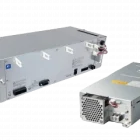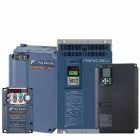Transformer remaining life analysis is a proactive diagnostic process that determines how long industrial or utility transformers can operate safely and efficiently. By assessing critical factors like insulation quality, load history, and environmental stressors, facilities gain actionable insights to prioritize maintenance, plan budgets, and avoid costly unplanned outages.
For instance, Fuji Electric’s MOLTRA oil-immersed transformers are built to endure harsh conditions, but pairing them with routine analysis ensures they meet or exceed their 40-year design life.
Why Transformer Lifespan Analysis Matters
Transformer lifespan analysis is crucial for several reasons. Firstly, it helps control costs by detecting issues early, reducing repair expenses by up to 60% compared to post-failure fixes. Additionally, it ensures safety by preventing catastrophic failures such as fires caused by overheating or gas buildup. Sustainability is another key benefit, as extending a transformer’s life by 10 years saves significant resources and reduces waste. Finally, regular analysis aids in regulatory compliance by aligning with standards like IEEE C57.91 and IEC 60076.
Key Methods for Assessing Transformer Lifespan
Insulation Resistance Testing
Insulation resistance testing is a critical method for evaluating transformer health. This process involves using a megohmmeter to apply voltage to windings and measure resistance, which helps identify moisture ingress or cracked insulation. Annual testing is recommended for transformers over 15 years old, and after major events like lightning strikes or overloads. Fuji Electric’s cast resin transformers, known for their robust insulation, still benefit from biannual testing in humid environments to ensure optimal performance.
Dissolved Gas Analysis (DGA)
DGA is another essential tool for assessing transformer health. It involves analyzing transformer oil for combustible gases like hydrogen, ethylene, and methane, which indicate internal faults. High ethylene levels often signal overheating, while hydrogen spikes suggest partial discharge. Facilities can detect early signs of aging or faults by collecting oil samples quarterly and comparing results to historical data. For example, a solar farm used DGA to detect rising ethylene levels in a 25-year-old transformer and extended its life by 12 years after targeted repairs.
Thermal Imaging
Thermal imaging is a noninvasive method for scanning transformers for hotspots in bushings, connections, or windings. This technique identifies uneven heat distribution often caused by loose connections or overloaded phases. Conducting scans quarterly, especially during peak loads, provides accurate readings. Fuji Electric’s HMI-integrated thermal cameras offer real-time alerts, enhancing the effectiveness of this method.
Load History Analysis
Load history analysis involves tracking peak loads and cycling frequency to assess stress patterns. Transformers degrade faster under consistent overloading; for instance, operating at 120% capacity for extended periods accelerates aging by 20% compared to running at 80%. By using Fuji Electric’s HMI systems to log load trends and automate alerts for overload conditions, facilities can adjust usage patterns to slow aging.
When to Repair, Retrofit, or Replace
Deciding whether to repair, retrofit, or replace a transformer depends on its condition. Minor issues like oil leaks or faulty bushings can be repaired. Retrofitting older units with modern monitoring systems or cooling mechanisms can add 5–10 years to their lifespan. However, severe insulation breakdown, chronic failures, or efficiency drops below 90% warrant replacement. For example, a utility company retrofitted a 1980s transformer with Fuji Electric’s monitoring kit for $20,000, delaying a $200,000 replacement by 9 years.
Frequently Asked Questions
What is the remaining life of a transformer?
The remaining life of a transformer is difficult to predict precisely, as it depends on factors like operating conditions, load history, maintenance records, and environmental factors.
Regular testing and monitoring (oil analysis, insulation resistance tests, etc.) can help assess the transformer’s health and estimate its remaining lifespan. For instance, a well-maintained transformer might exceed its expected lifespan, while one subjected to frequent overloads may need early replacement.
What is the average life expectancy of a transformer?
The average life expectancy of a properly maintained power transformer is typically between 30 to 50 years. However, this can vary significantly based on the transformer type, usage patterns, and environmental conditions. Dry-type transformers like Fuji Electric’s cast resin models often outlast oil-immersed ones in harsh environments.
How long are transformers good for?
Transformers can remain in service for many decades if properly maintained and operated within their design parameters. However, performance degradation and increased risk of failure become more likely as they age. Regular monitoring helps identify when a transformer is nearing the end of its useful life.
How do you know if a transformer is bad?
Signs of a failing transformer include unusual noises (humming, crackling), overheating, oil leaks, poor voltage regulation, and high levels of combustible gases in the oil (detected through DGA). Insulation breakdown (detected through insulation resistance tests) is another critical indicator. Regular testing helps identify these signs early.
When should a transformer be replaced?
A transformer should be considered for replacement when it reaches the end of its expected lifespan (typically 30-50 years), experiences frequent failures or requires costly repairs, shows significant degradation of insulation or other critical components, or can no longer meet the demands of the application (e.g., due to increased load requirements). Additionally, if a more efficient or reliable transformer is available, offering significant cost savings or performance improvements, replacement might be justified.
Benefits of Proactive Lifespan Analysis
Proactive transformer lifespan analysis offers several benefits. It enables predictive maintenance, allowing facilities to fix issues before they escalate. Financial forecasting becomes more accurate, as lifespan projections help allocate funds years in advance.
Additionally, maintaining efficient transformers reduces energy waste and lowers emissions. By combining these strategies with Fuji Electric’s diagnostic services and HMI systems, facilities can create a custom aging profile for their transformer fleet, ensuring optimal performance and longevity.
Final Insights
Transformer remaining life analysis transforms guesswork into actionable strategy. By leveraging methods like DGA and thermal imaging—and partnering with experts like Fuji Electric—facilities can squeeze every drop of value from their equipment.
This proactive approach not only extends transformer lifespans but also enhances operational reliability, safety, and sustainability. Ready to upgrade? Explore Fuji Electric’s transformer solutions and HMI-integrated monitoring tools to future-proof your operations.
About Fuji Electric Sales Philippines, Inc.
Fuji Electric Sales Philippines, Inc. helps bring advanced technology from Fuji Electric Co., Ltd. in Japan to businesses nationwide. Their team focuses on product sales, promotion, and support for energy-efficient technologies, automation, and power electronics.
Enhance your efficiency with transformer remaining life analysis. Reach out to Fuji Electric today:
Gray Rozol
Senior Sales Engineer
0917 1251682








